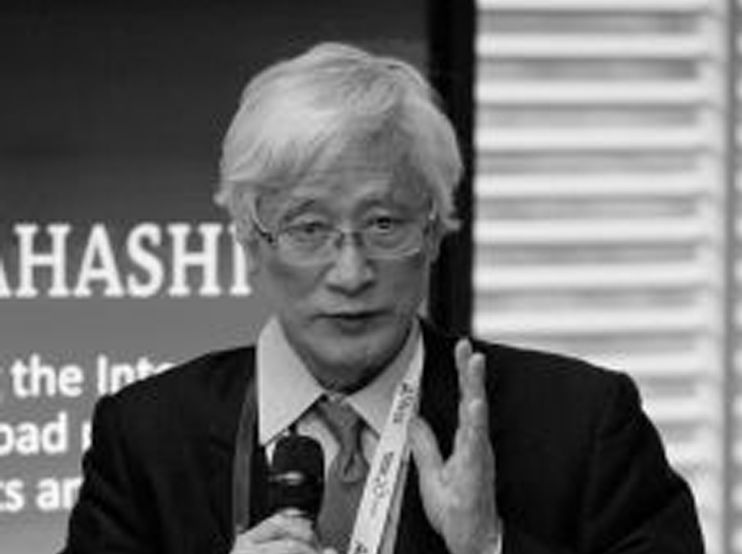“Cerf is very eager for interplanetary communication, I think some kind of inner-mind communication is what’s needed,” says Takahashi with only a bit of leg pulling.
Takahashi, like Cerf, is considered an Internet pioneer and has spent decades promoting the internet and better communication in his native Japan. The power of the internet as a mode to bring people closer together is what drove the Internet Hall of Fame inductee to leave a career as a writer and editor in the early ‘80s and put his energy toward assembling the pieces of what would become the internet in Japan.

Unlike many of his peers, Takahashi came relatively late to the technology world. Trained at Tohoku University in the mid ‘60s in aesthetics and art history, he was introduced to technology when he took on a marketing job at the Laboratory of Innovation for Quality of Life, a sort of technology think tank. After the think tank, Takahashi landed at Digital Computer Limited where he managed UNIX workstations and the development of high-speed networks. “Everything was so fresh and attractive,” Takahashi says. “I learned UNIX, studied artificial intelligence, database technologies, everything was fascinating.”
In 1988, during a visit to the National Science Foundation, Takahashi began to learn about the internet under the guidance of Stephen Wolff. “I had found my vocation.” Takahashi says.
With his fellow network obsessed colleague Professor Jun Murai, Takahashi began making annual pilgrimages to INTEROP, where he started trading ideas with Cerf, Dan Lynch, Dave Clark, and other early internet designers. “Murai said to me ‘your occupation should be internet,’ so we set out to build internet in Japan.”
While he was busy writing the first Japanese book on the internet, Takahashi served as president of the Tokyo Internet Corporation, which launched its ISP business in 1995 and quickly became the largest internet provider in Japan.
Of all the technologies involved in developing the internet, the communication protocol TCP/IP had the biggest impact, Takahashi says. “Before TCP/IP because there were so many network architectures – SNA, AppleTalk, HNA (Hitachi), FNA (Fujitsu), Xerox, NetWare, and so on – we needed separate emulators for each, the complexity was huge,” Takahashi says. “But after adopting TCP/IP it all became very simple. All these different networks became ONE single network.”
Takahashi admits he received some grief from sales engineers in Japan whose network architectures TCP/IP effectively killed. “But the bigger lesson we learned in those days was around why open systems are important.”
Takahashi maintains that view, as he watches the mobile internet and the app world take off around the globe. With powerful and immediate ways to share all kinds of information now tucked in our pockets, Takahashi sees the mobile internet as an even better tool than its deskbound parent for connecting people. “It [should] bring all of us together better, elders and younger generation,” he says. “And all of our things too.”
Takahashi sees the end-state of the internet as a kind of “synthesis network” where every body and every thing has a way of communicating across some open system. It’s a vision that’s been coming into focus for him across almost three decades.
And that inner-mind communication thing? If you consider how fast sensors of all kinds are insinuating themselves into the gadgets we use, wear, and carry with us daily, it doesn’t seem that far-fetched that we’ll begin to communicate in ways that are a bit reminiscent of some Vulcan mind-meld. And as usual, when the rest of us get to a place where we are comfortable with a new phase of life-changing technology, Takahashi will already be there, waiting to show us around.